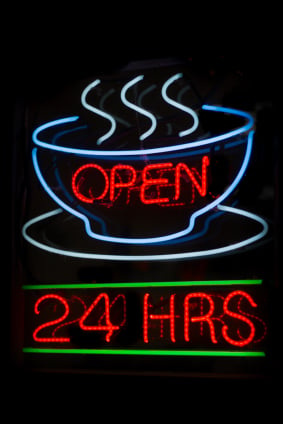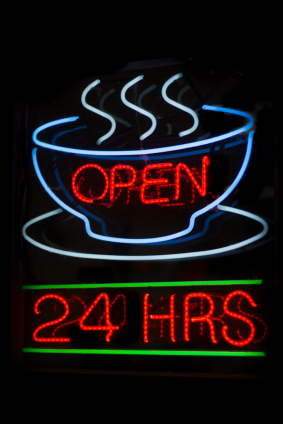5 Simple Tips to Get Your Sales Letter Opened and Read
September 10, 2013 •Brian Watson

 As a marketer, you don’t need me to tell you just how tough it can be to cut through the glut of media out there and get your message noticed by target audiences.
As a marketer, you don’t need me to tell you just how tough it can be to cut through the glut of media out there and get your message noticed by target audiences.
But I’ll do it anyway
Although the question of just how many ads consumers are exposed to is a little bit loaded (is it strictly media, or does packaging in a supermarket or signage outside a business count, too?), there’s no debating that the figure is significant.
Consumer Reports suggest the average consumer experiences 247 ads each day, while marketing research firm Yankelvoich counters with a staggering 5,000. While the truth is probably somewhere in between, even at the lower end, that’s still a lot of competing messages to deal with.
What chance does your sales letter have against that kind of rising tide?
Well, pretty good actually. That is if you lean on the best-practices of direct mail professionals with decades of tried-and-true market research to back their assumptions.
The beauty of direct mail is that it’s a channel that’s perfect for experimentation. And experiment direct marketers have. Through countless split-tests and near-constant iteration, direct mailers have amassed tons of data as to what elements consistently move the needle on response rates, and which pieces just leave consumers cold.
So what are the winning traits shared by the most effective sales letters? Read on for five simple sales letter strategies to incorporate into your next direct mail marketing campaign.
Use a Headline
When it comes to direct mail, you’ve only got a few moments to make a solid first impression. Consumers only spend an average of 15 seconds with a direct mail piece, according to a 2009 InfoTrends study. That’s why an impactful headline is so important – not just for postcards, but sales letters as well.
Sure it breaks the illusion that your correspondence is actually, you know, a sales letter. So what? Letters that feature headlines consistently outperform letters that don’t. And because direct mail is an investment designed to generate a result – a sale, a call, a download – that’s all that matters. Skip subtlety in favor of a headline that grabs attention and resonates with prospects by provides something that’s important, or relevant, or valuable.
Add a Call-Out Box
It’s not enough for your sales letter to simply feature a headline. It also has to be persuasive and impactful. Famed advertiser David Ogilvy’s research into ad readership in the sixties found that only around 20% will read past an ad’s headline. That conclusion has held up throughout numerous tests over the years, in channels that run the gamut from email marketing to direct mail.
A call-out box, commonly called a “Johnson Box”, is a tried-and-true way to add emphasis to your headline. Along with the P.S., a call-out box is one of the first things that draws in consumers when they look at your direct mail piece. And that makes it a key tool to quickly communicate the core message of your mailing.
Go Long-Form
A long-form sales letter is pretty much exactly what it sounds like: a detail-rich letter, often spread over several pages, that provides your prospect with as much compelling information – features, benefits, testimonials – as they need to be personally satisfied with their decision to act on your offer.
And they’re really effective. A 2004 Marketing Experiments Journal test found that long-form sales letters steadily beat short-copy alternatives, sometimes by as much as 400%.
But wait… didn’t I just get done telling you that only 20% of consumers will read past the headline? Well yes, but the beauty of the long-form letter is that it’s appropriate for headline scanners and people that are drawn to details.
Noted copywriter Dan Kennedy refers to these two personality types as “impulsive” and “extremes”.
“Impulsives” aren’t interested in reading an entire sales letter. They’re skimmers. But by breaking up your letter into bite-sized chunks, you can pull-in impulsives and convince them to read more – if not the entire letter, at least enough to convince them to follow-up on your call to action.
“Extremes” are rational and detail-oriented. So long-form letters are the perfect tool to satisfy their thirst for knowledge and need to make a thorough, well-informed decision.
Use “Doodles”
Like a lot of the items on this list hand-written notes and copy doodles (e.g. arrows, underlines, asterisks) have long been a staple of direct mail for the simple fact that they work exceptionally well.
Hand-written notes and doodles have been shown to consistently boost response when applied to a direct mail piece, even if they’re not actually personally applied.
Why? Well, for one, there’s a certain uniqueness factor. What they lack in ascetic appeal, hand-drawn (or written) elements more than make up for in overall impact. It’s simply hard for people that are giving your letters even a cursory scan to miss the sections and points that you’ve emphasized and highlighted with hand-drawn embellishments.
They also leverage the principle of reciprocity – the tendency of people to respond to a positive action with another positive action. Hand-written or -drawn or not, copy doodles and notes provide the appearance of personalization; that the sender took time out of their day to make a letter easier to understand in a glance by drawing an arrow to an important point or jot down a note in the margins. And that can provide a powerful social signal that pays off in improved readership levels and response rate.
Push the Envelope
The message of your sales letter is obviously really important. Effective sales letters are typically no accident. They’re the painstaking result of hours of research, writing, testing, and optimization.
But no matter how compelling and effective the content of your sales letter might be, people actually have to open the piece to be convinced by your message.
That’s one of the thornier trade-offs of leaning heavily on sales letters in your direct marketing efforts. Unlike postcards, which arrive in a format that can be immediately consumed, sales letters require a little bit of extra effort from recipients.
That’s why it pays to consider the envelope you’re sending. Small changes to the exterior of your piece can pay big dividends in the form of higher open and response rates.
Over the years, direct mail professionals have tried all kinds of tricks and strategies to increase the likelihood of a piece being opened -- everything from custom envelope shapes to dousing envelopes in a specific scent before it’s sent.
Effectiveness of a given technique will always boil down to campaign details– your company, your list, your offer, etc. (And that’s a really solid reason why you should always split-test before you send.) However, the most consistently effective option also tends to be simplest – a plain, unadorned envelope that looks as much like actual correspondence as possible.
To achieve that effect, consider using:
• Stamps Instead of Metered Postage. Machine-printed postage screams mass mailing. Stamps, on the other hand, give the impression of correspondence – increasing the likelihood that your piece is opened.
• A Plain Envelope. Again: the idea is to look as much like an “actual letter” as possible. Not to mention curiosity is a powerful impulse. For both those reasons, a plain, white #10 envelope generally outperforms colored or custom envelopes.
• A Personalized Return Address. This may seem trivial, but even a small envelope change can have a big effect on direct mail ROI. To keep things personal (and a little mysterious), consider using just the name of the sender instead of a company name or logo.
• Upgraded Delivery. When it comes to response rates, direct mail pieces mailed using first class rates generally outperform those sent with third-class postage. If you have a small list and the time for personalized follow-up, untraditional delivery channels – like a FedEx envelope or UPS tube – are a great, albeit expensive, way to ensure your piece is opened.
Ready to put these lessons into action? If you’d like to learn more about how to plan, build, and execute smart, data-driven direct mail campaigns, we’d love to chat. Simply call 800.276.6456 or get in touch online here.
Do you have a few go-to direct mail strategies? Share them in the comments section below.
Get Updates
Featured Articles
Categories
- Charity Care Management (1)
- Compliance (2)
- Customer Service (8)
- Digital Front Door (1)
- Direct Mail (6)
- eBilling (1)
- EBPP (34)
- ESL Statement (2)
- eStatement (1)
- Healthcare Channel Partner Billing (1)
- IVR (3)
- Mobile Payment (11)
- Online Billing and Payment (6)
- Online Patient Payment (17)
- Outsource Print Management (4)
- Paperless Billing (4)
- Patient Engagement (2)
- Patient Friendly Billing (21)
- Print and Mail (7)
- QR Codes (1)
- Quick Pay (7)
- Security (1)
- Self-Pay Patients (9)
- Self-Pay Revenue (4)
- Statement Design (32)
- Statement Print and Mail (1)
- Statement Printing and Mailing (28)
- Statement Processing (36)
- TransPromo (1)
- Up-Front Billing (1)

